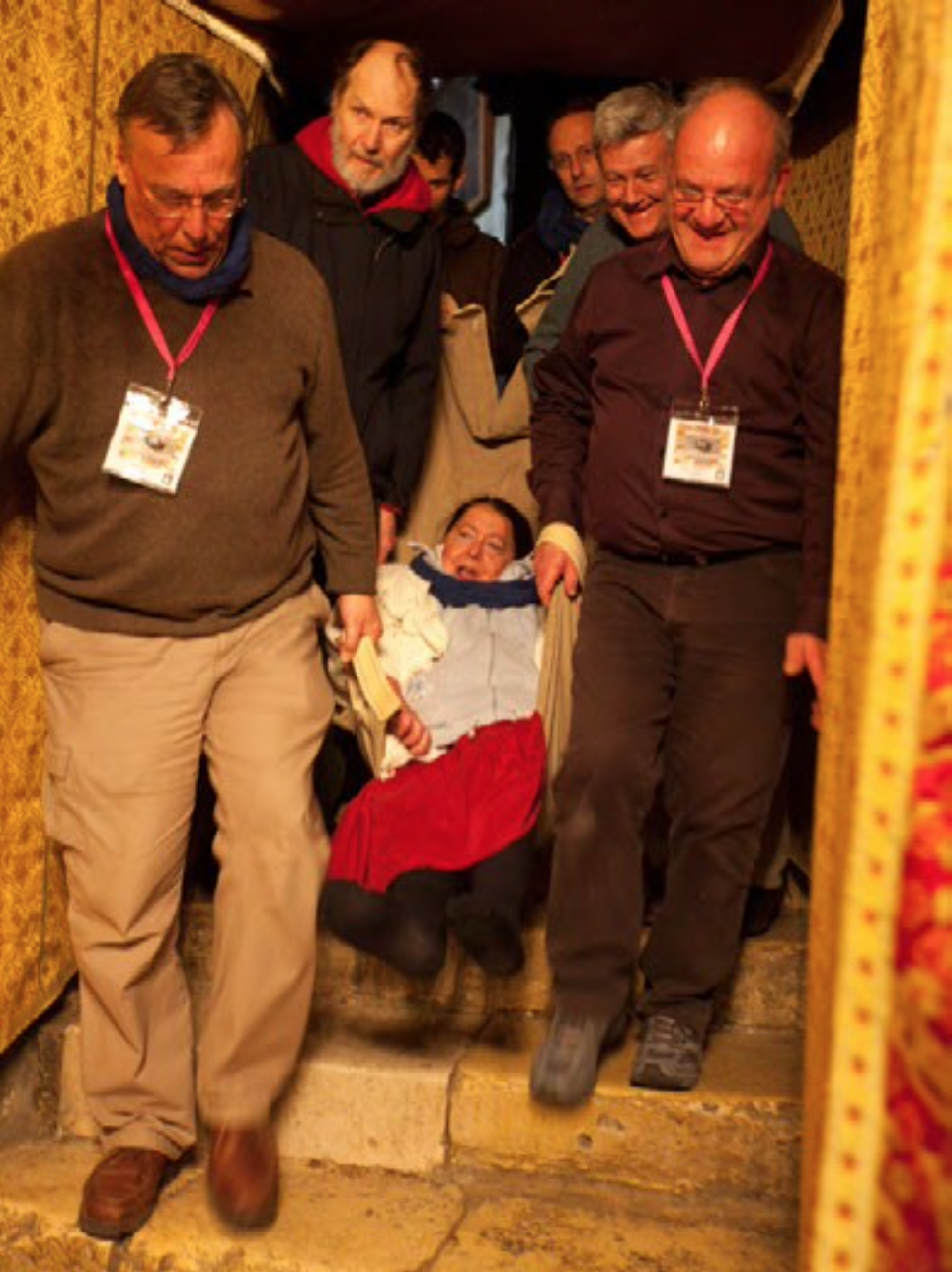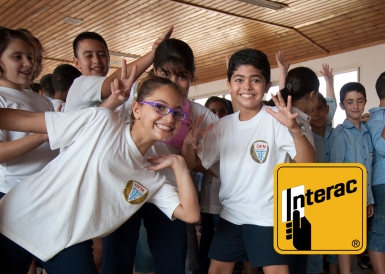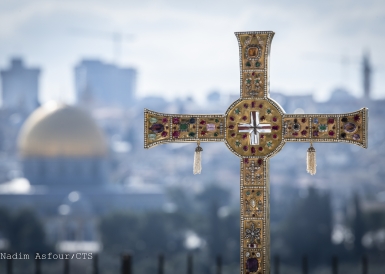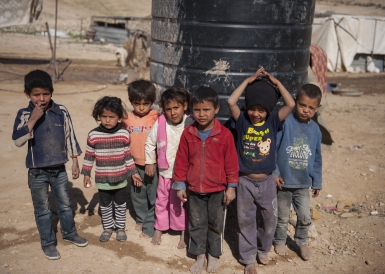All pilgrimages have their highlights. But when pilgrims watch over each other and especially over people with motor disabilities, they can experience a different highlight, as here in Bethlehem.
By Laurent Guillon-Verne
Angels we have heard on high, sweetly singing o’er the plain;
And the mountains, in reply, echoing their joyous strain

Every Christmas we hear the invitation to come to the manger and like the santons of Provence to take the road to “le divin Messie” who comes to give us hope and to save us. A nativity scene, a simple stable, a cave, is necessarily small. You don't get a picture of that in a cathedral ... The location is on the scale of the event: an unnoticed birth whose first witnesses are the poorest, the shepherds in the countryside.
In Bethlehem of Judea, we have an appointment with a manger. It’s a nativity scene, certainly with a basilica above, but a nativity scene all the same! You can wait in the upper basilica one, two, three hours, before being able to descend and kneel before the silver star marking the presumed birthplace of our divine King. Between two rocks, the curious, the skeptics, the solemn, the haughty, the proud, the dazed, the shy, the officious, the modest, the angry, the gracious, the religious, the aggressive, the considerate – all descend. All will have to crouch to go down the twenty steps created over time by millions of pilgrims. All, except people with physical disabilities: it is impossible for them to go there in wheelchairs...
Yet, they did this! We helped them … not by taking them to the entrance staircase, but by using the exit staircase, which is a little wider. Lined up along the choir, in the Armenian part of the basilica, our thirteen disabled friends waited, with a mixture of gravity, joy and anxiety for us to take them down. They confidently left themselves in the hands of a team of volunteers who carried them, one by one, in a large canvas, held by six people. It is in shuffling positions that everyone gets through this very narrow passage to the manger. It is a tense time both for the one being carefully carried and for the concerned porters; and recitation of the rosary helps them to move together at the same time. Step after step, we all walk towards the star, helped by attendants who make the other pilgrims wait, freeing up the space so that we can drop off our friends in front of the manger. It’s a moment of eternity and very emotional for all those suffering, disabled, and physically disadvantaged who have entrusted themselves to Jesus.
Christelle, the mother of Anne, who has just been placed on the floor of the crib, bursts into tears. She says that, at that moment, she has relived the moment of her daughter’s birth of some 21 years ago when she was born with multiple disabilities. Maria, an 80-year-old Italian mother in her wheelchair, accompanied by her three children, is not part of our group but introduces herself to us. In rough English, we offer our help. We helped her children carry her. Here, in the manger, these three brothers and sisters with their mother in their arms offered themselves together to the Holy Family. We will not be able to forget her luminous blue gaze nor that of her children, after having gone back up the small staircase to place Maria back in her chair. There was no exchange of words; only the emotion of this act experienced together, united in the same faith. Ever since then, the following verse will resonate on Christmas Eve:
Come to Bethlehem and see
him whose birth the angels sing;
come, adore on bended knee
Christ the Lord, the newborn King.
The twice sung chorus, "Gloria, in excelsis Deo", takes on greater meaning; however, we are witnesses to the fact that visiting the manger is not just about Bethlehem – the manger is always Christmas!



